This article was co-authored by Kpoene Kofi-Bruce. Kpoene Kofi-Bruce is a tailor, couture wedding gown designer, and the Creative Director of Mignonette Bridal and Ette the Wedding Tailor in Chicago, Illinois. With nearly two decades of experience as a wedding gown designer, small business owner, and vintage sewing enthusiast, Kpoene specializes in wedding gown design and the social history of wedding dresses. She received a BA in Creative Writing from Middlebury College and studied the business of fashion at the Fashion Institute of Technology. She is also a graduate of the Goldman Sachs 10KSB program and the Chicago Fashion Incubator and has written about wedding fashion for Jezebel, Catalyst, the Sun Times, and XO Jane.
This article has been viewed 67,986 times.
The size, shape, and appearance of your breasts will change during pregnancy. As your breasts change, not only will they get larger, but your breasts become more sensitive because of the hormonal changes that occur during pregnancy. Selecting and wearing the proper bra size will ensure optimal support and comfort throughout your pregnancy.
Steps
Measuring the Lower Bust
-
1
-
2Find your band size. Take the inch side of a measuring tape and place it firmly around your body just underneath your breasts and below your armpits.[3] Keep your arms as close as possible to your body to get an accurate measurement of your band size. If this becomes too difficult for you to do yourself, ask a friend to help. Look in the mirror to make sure that the tape is parallel to the floor along your back and breasts.[4]
- You shouldn’t have any fingers underneath the measuring tape.
Advertisement -
3Write down your measurement. To get the most accurate band size, round the number up to the closest whole number and then add five to allow room for the increase in bust size as your pregnancy progresses. For instance, if the measurement you obtain is 39.5 inches (100.3 cm), rounding up to the nearest whole number is 40. Adding 5 inches (12.7 cm) would mean that your band size is 45 inches (114.3 cm).[5]
Measuring the Upper Bust
-
1Wrap a measuring tape around the fullest portion of your breasts.[6] Take the measuring tape and wrap it firmly around your body at the biggest portion of your breasts, which is usually around the nipple area. Hold both ends of the measuring tape at the side of your breasts with one hand. Use your other hand to push the measuring tape in between your breasts for a more accurate measurement. Keep your arms as close as possible to your body while taking the measurement.[7]
-
2Record your measurement in inches. To get the correct cup size, you will need to round the measurement up to the next whole number. For example, if the number you record is 27.5 inches (69.5 cm), your cup size is going to be 28 inches (71 cm). If you can’t see the measurement, have someone check it for you so that you don’t have to move.[8]
-
3Calculate your bra cup size. Take the measurement you recorded for the band size and subtract it from the measurement you have for the cup size. Record the result. The result is your bra cup size. There is a 1 inch (2.5 cm) difference between all cup sizes with the exception of the A cup and AA cup, where there is a 1/2 inch (1.3 cm) difference.[9]
- Bra Sizes: 0 to 1/2 inch (1.3 cm) difference is an AA cup; 1/2 inch (1.3 cm) to 1 inch (2.5 cm) is an A cup; 2 inches (5.1 cm) is a B cup; 3 inches (7.6 cm) is a C cup; 4 inches (10.2 cm) is a D cup; 5 inches (12.7 cm) is a DD or E cup; 6 inches (15.2 cm) is a DDD or F cup; 7 inches (17.8 cm) is a G cup; 8 inches (20.3 cm) is an H cup; 9 inches (22.9 cm) is an I cup; 10 inches (25.4 cm) is a J cup.
-
4Measure your breasts every two to three weeks during pregnancy. Do this to ensure you are wearing the proper size bra. During pregnancy your breasts grow quite rapidly and you may need to change your bra size multiple times.[10]
Wearing the Bra
-
1Purchase three bras. If you’re wondering how many bras to purchase, three is ideal. This will allow you to have one bra to wear, one to have, and one to wash. This number, however, may be too many if you expect to purchase multiple bras in different sizes throughout your pregnancy.[11]
- It is also good to choose bras in multiple colors to wear with different outfits.
-
2Avoid underwire bras. Underwire bras are mostly safe, but they can be a problem during pregnancy. If you’re planning on breast feeding, underwire bras can push into the breast tissue, which clogs the milk ducts. This can inhibit nursing and cause breast infections. Instead, look for look for bras that have contoured cups that conform to your breasts.
- An example of a contour bra would be Warner’s Women’s Cloud 9 Wire-Free Contour Bra.
-
3Make sure the bra fits comfortably. There are several things you need to check when trying bras on. First, the straps should fit comfortably on the shoulders. They should not dig in or be too loose. Your breasts shouldn’t have too little or too much room in the cups. The band should sit straight around your ribs. The center front of the bra should sit flat on the chest.[12]
- If your straps don’t feel comfortable at first, you can probably adjust them until you find the right fit.
-
4Take proper care of the bra. Caring for your bra properly extends the life and elasticity of the bra. The best way to wash your bra is in the sink with cold water and a mild detergent. If you use the washer, use cold water on a gentle setting. Hang to dry. Do not use a dryer.
- Some women clean their bra while wearing it in the shower.
Warnings
- If the size that should be correct according to the measurement doesn’t fit, continue trying on sizes until you find a size that feels comfortable.⧼thumbs_response⧽
Things You'll Need
- Measuring Tape
- Pen
- Paper
References
- ↑ Kpoene Kofi-Bruce. Couture Bridal Designer. Expert Interview. 28 January 2021.
- ↑ http://www.cakematernity.com/how-to-measure-bra-size
- ↑ Kpoene Kofi-Bruce. Couture Bridal Designer. Expert Interview. 28 January 2021.
- ↑ https://www.bravadodesigns.com/us/pages/fitting-room
- ↑ https://www.bravadodesigns.com/us/pages/fitting-room
- ↑ Kpoene Kofi-Bruce. Couture Bridal Designer. Expert Interview. 28 January 2021.
- ↑ https://www.bravadodesigns.com/us/pages/fitting-room
- ↑ https://www.bravadodesigns.com/us/pages/fitting-room
- ↑ https://www.bravadodesigns.com/us/pages/fitting-room
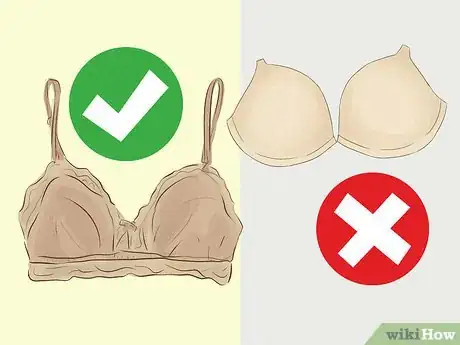

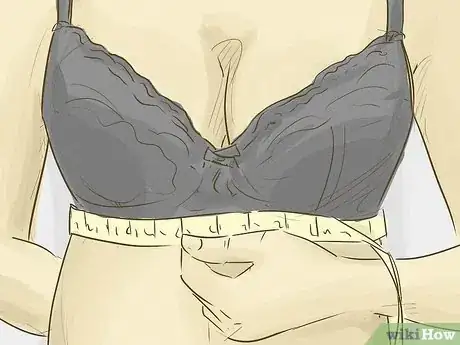
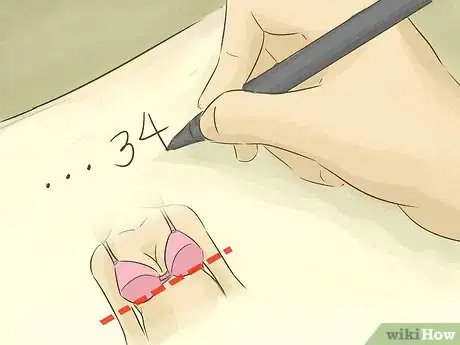
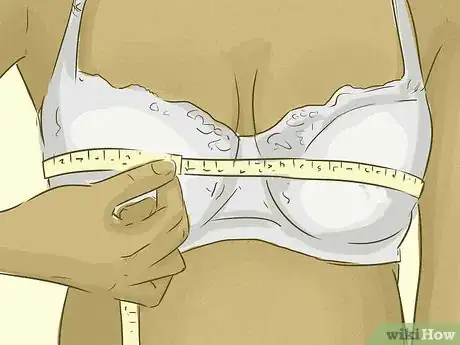
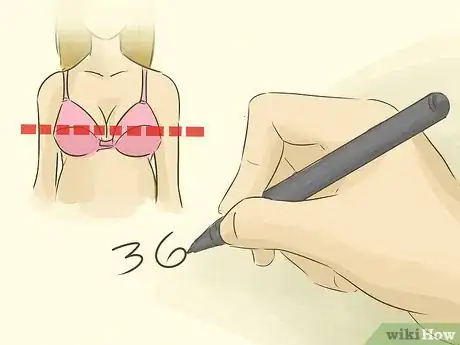
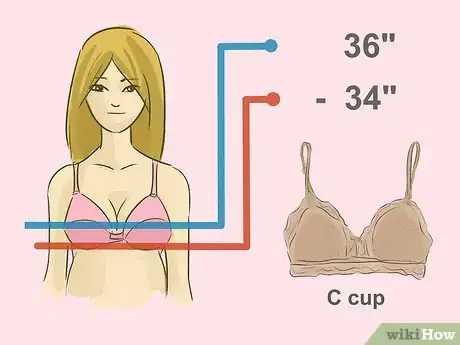
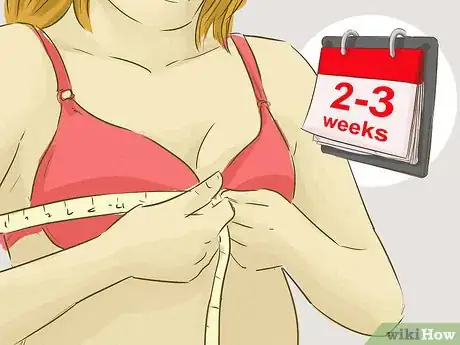
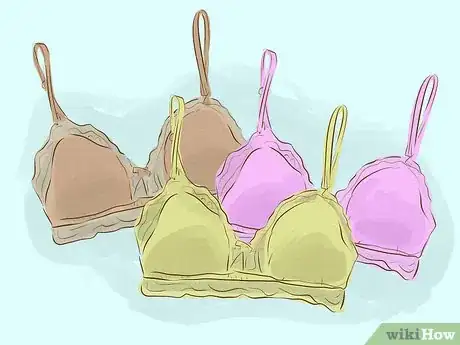
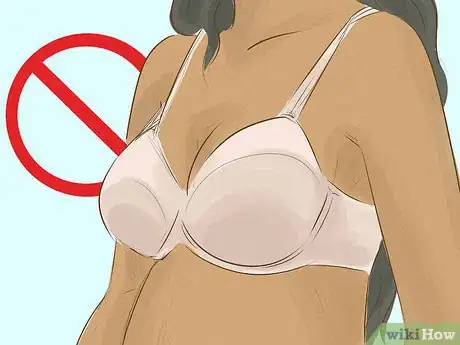

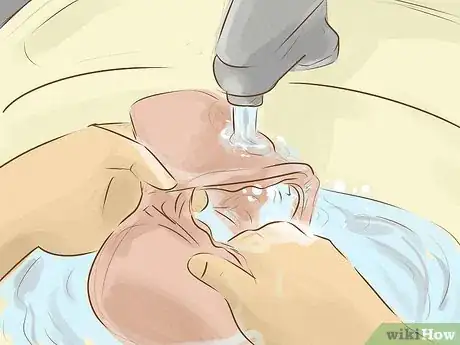

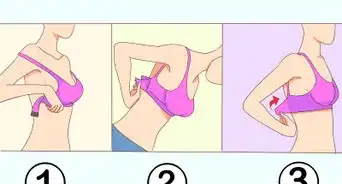
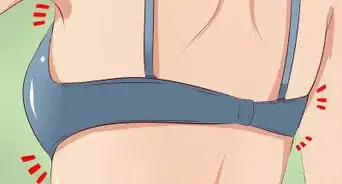

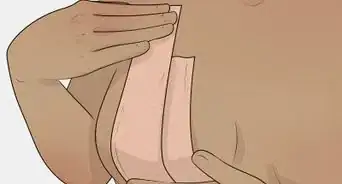

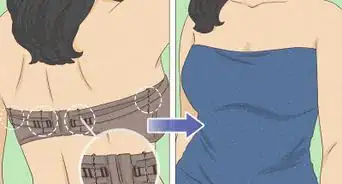
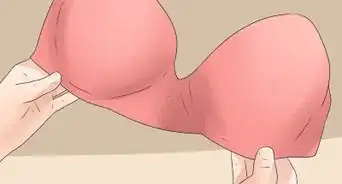
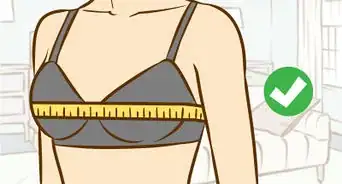










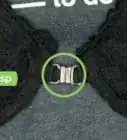
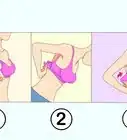




































Medical Disclaimer
The content of this article is not intended to be a substitute for professional medical advice, examination, diagnosis, or treatment. You should always contact your doctor or other qualified healthcare professional before starting, changing, or stopping any kind of health treatment.
Read More...